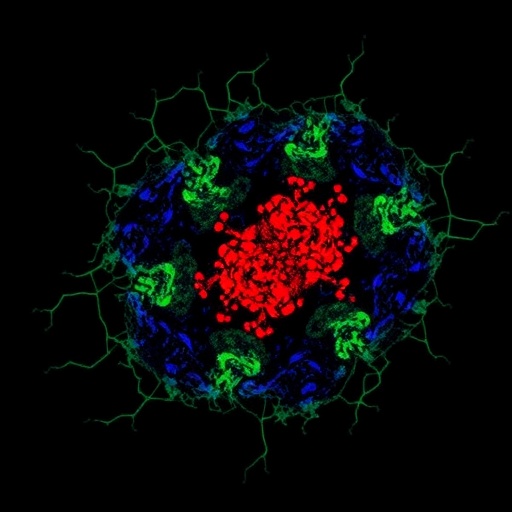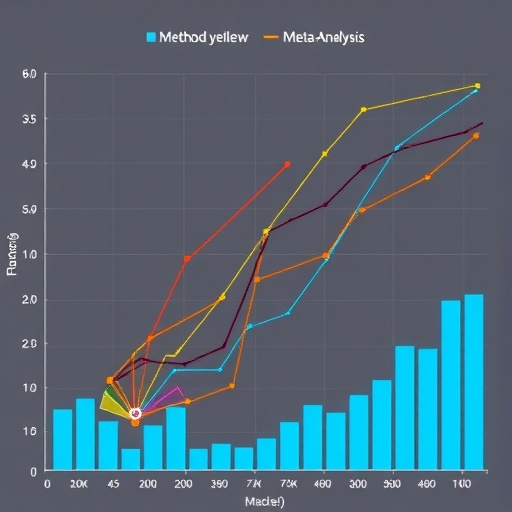A recent breakthrough in neurotoxicology unveils the pivotal role of Plin4, a lipid droplet-associated protein, in modulating neuronal fate following exposure to benzo[a]pyrene (BaP), a widespread environmental pollutant. This discovery sheds light on the intricate biochemical networks that dictate the balance between cellular survival and death mechanisms, particularly in the context of lipid metabolism and ferroptosis, a form of regulated cell death linked to iron and lipid peroxidation. The study, conducted by Sun et al. and published in Cell Death Discovery, embarks on unmasking the molecular interplay that governs neuronal resilience or vulnerability to BaP, a compound notorious for its carcinogenic and neurotoxic potential.
Benzo[a]pyrene is a polycyclic aromatic hydrocarbon ubiquitous in the environment, primarily generated by incomplete combustion of organic matter. Its neurotoxic effects have long been implicated in various neurodegenerative diseases, yet the exact molecular pathways through which BaP exerts damage at the cellular level have remained elusive. Lipid droplets, once regarded merely as inert fat storage organelles, have emerged as dynamic regulators of cellular homeostasis, especially under stress conditions. The research focuses on Plin4, a member of the perilipin family of proteins that coat lipid droplets and regulate their biogenesis and turnover, hypothesizing its involvement in BaP-induced neuronal injury.
The researchers employed advanced neurobiological models, exposing cultured neurons to BaP while meticulously analyzing lipid droplet dynamics alongside markers of ferroptosis. Their findings reveal that Plin4 expression is significantly upregulated in response to BaP exposure, a response that orchestrates the accumulation of lipid droplets within neurons. This accumulation reflects a cellular adaptation, potentially aimed at sequestering harmful lipid peroxides, but paradoxically may also predispose neurons to ferroptotic cell death if the balance tilts beyond repair.
Further biochemical assays demonstrated that knockdown of Plin4 drastically mitigated lipid droplet build-up, concurrently attenuating the extent of ferroptosis as measured by lipid peroxidation levels and cell viability assays. Such data underscore a dualistic role for Plin4: while it facilitates protective lipid sequestration, its overactivation under prolonged BaP stress may inadvertently trigger ferroptosis, contributing to neuronal degeneration.
An intriguing dimension unearthed by the study involves iron metabolism dysregulation in BaP-exposed neurons—a critical determinant of ferroptosis. Elevated intracellular iron catalyzes lipid peroxidation, leading to membrane damage and cell death. The relationship between Plin4-mediated lipid droplet formation and iron handling within neurons paints a complex picture where lipid biology intersects with iron homeostasis. Sun et al. propose that Plin4 may influence the availability or compartmentalization of iron, further tipping the scales toward ferroptotic demise.
This mechanistic insight offers fresh avenues for therapeutic intervention. Targeting Plin4 function or its regulatory pathways could form the basis for neuroprotective strategies against environmental toxins like BaP. Modulating lipid droplet dynamics to curtail ferroptosis could emerge as a novel neurotherapeutic paradigm, especially relevant for populations chronically exposed to pollution-derived polycyclic aromatic hydrocarbons.
The study also raises broader implications for our understanding of neurodegenerative disorders, many of which involve aberrant lipid metabolism and oxidative stress. By elucidating how environmental insults exacerbate such pathways via proteins like Plin4, this research bridges the gap between external toxic exposure and internal molecular dysfunction. It strengthens the concept that neuronal lipid droplets are not merely metabolic bystanders but active players in determining cell fate.
Moreover, the sophisticated experimental design incorporating molecular knockdown, lipidomic analysis, and ferroptosis assays establishes a robust framework for future studies. It opens the door to investigations into other perilipin family members’ roles in neurotoxicity and their potential crosstalk with iron metabolism and oxidative stress pathways. Such multidimensional research could reveal complex protective networks within neurons or identify vulnerabilities exploitable for clinical benefit.
This investigation into BaP-induced ferroptosis also highlights a critical environmental health concern. As BaP contamination remains pervasive due to fossil fuel combustion and industrial activities, understanding its neurological impact is vital. The link to Plin4 propels research beyond descriptive toxicology into the realm of intracellular signaling modulation, marking a paradigm shift in how environmental neurotoxins are studied and conceptualized.
Importantly, the study emphasizes that ferroptosis is not merely a pathological endpoint but a regulated process susceptible to precise molecular interventions. The involvement of Plin4 in this regulation introduces a new molecular target whose modulation might protect neurons from oxidative damage and lipid peroxidation chain reactions. Such strategies could complement broader antioxidant or iron-chelating therapies in neurodegenerative disease management.
The findings also stimulate discourse on cell-type specificity in ferroptosis susceptibility. Neurons, with their high oxygen consumption and lipid-rich membranes, may uniquely leverage lipid droplet pathways as survival mechanisms. The differential expression and regulation of Plin4 in neuronal subpopulations could underlie selective vulnerability observed in certain neurological disease phenotypes, offering insights into disease heterogeneity.
In conclusion, the comprehensive work of Sun and colleagues illuminates the crossroads of environmental toxicology, lipid biology, and regulated cell death within neurons. By pinpointing Plin4 as a key modulator of lipid droplet accumulation and ferroptosis under BaP exposure, the study provides a molecular blueprint for unraveling how neurons respond to toxic insults. These revelations hold promise for developing innovative interventions targeting lipid droplet machinery to stave off neurodegeneration triggered by environmental carcinogens.
As we grapple with rising pollution levels and their impact on human health, such cutting-edge research enhances our capacity to dissect and counteract toxin-induced cellular damage. The neuroprotective potential of manipulating proteins like Plin4 heralds a new frontier where intracellular lipid management emerges as a cornerstone of therapeutic strategy against environmentally linked neurological decline. Future explorations expanding on these findings could unlock novel approaches to preserving neuronal integrity in an increasingly contaminated world.
Subject of Research: Neuronal lipid droplet regulation and ferroptosis induced by benzo[a]pyrene exposure.
Article Title: Plin4 modulates lipid droplet accumulation and ferroptosis in neurons exposed to benzo[a]pyrene.
Article References:
Sun, H., Ma, Z., Guo, X. et al. Plin4 modulates lipid droplet accumulation and ferroptosis in neurons exposed to benzo[a]pyrene. Cell Death Discov. 11, 442 (2025). https://doi.org/10.1038/s41420-025-02747-8
Image Credits: AI Generated
DOI: https://doi.org/10.1038/s41420-025-02747-8
Tags: benzo[a]pyrene exposure effectscell death mechanisms in neurodegenerationferroptosis in neurotoxicologyiron and lipid peroxidation in cellslipid droplet regulation in cellular stresslipid metabolism in neuronsmolecular pathways of BaP toxicityneurodegenerative disease research advancementsneuronal resilience to environmental toxinsneurotoxic pollutants and brain healthPerilipin family protein functionsPlin4 neuronal lipid droplets






